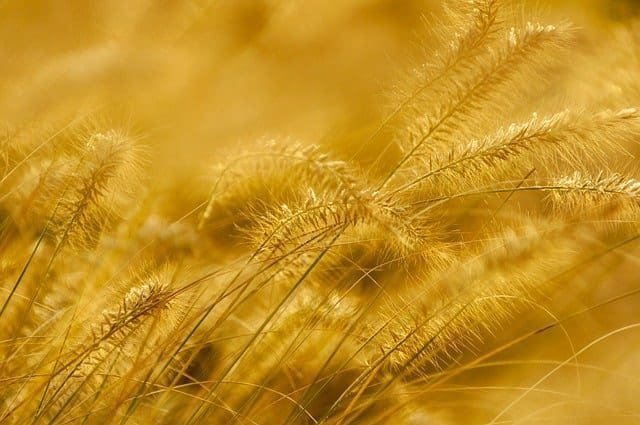How to Revive Yellow Grass and Achieve a Lush, Green Lawn
Introduction
However, yellow or discolored grass can be a frustrating sight and a signal that something is amiss with your lawn’s health. Fortunately, with a little understanding and care, you can easily revive yellow grass and restore it to its vibrant green glory. This article will explore the various reasons behind yellow grass and provide a comprehensive guide on how to fix and maintain a healthy, green lawn.
Understanding the Causes of Yellow Grass
Before we delve into the solutions, it’s crucial to identify the root causes of yellow grass. Several factors contribute to this undesirable condition:
Lack of Water: Inadequate watering can lead to dry, yellowing grass. Lawns require consistent and sufficient watering to maintain their health and color.
Overwatering: Surprisingly, overwatering can be just as damaging as underwatering. It suffocates the roots and leads to shallow root growth, which ultimately results in yellow grass.
Nutrient Deficiency: Yellow grass can be a sign of nutrient deficiency, particularly a lack of nitrogen, iron, or magnesium.
Soil Compaction: Compacted soil restricts root growth and nutrient absorption, leading to yellowing and weak grass.
Poor Soil pH: The pH level of the soil directly affects nutrient availability to the grass. Acidic or alkaline soils can hinder nutrient absorption and result in yellow grass.
Lawn Diseases: Fungal infections and diseases can cause yellow patches in the lawn, often accompanied by wilting and thinning grass.
Pests: Insect infestations, such as grubs or chinch bugs, can cause localized yellow patches.
How to Fix Yellow Grass
Proper Watering: The key to a healthy lawn is a consistent watering schedule. For most grass types, it’s best to water deeply and infrequently, allowing the soil to dry out slightly between watering sessions. A general guideline is to water the lawn 1 to 1.5 inches per week, either early in the morning or late in the afternoon to reduce water evaporation.
Monitor Soil Moisture: Use a soil moisture meter to gauge the moisture level in your lawn. This tool helps you determine when it’s time to water and prevents overwatering.
Address Soil Compaction: Aerating the soil will relieve compaction and improve the flow of air, water, and nutrients to the roots.
Test and Amend Soil pH: Conduct a soil pH test to identify any acidity or alkalinity issues. Based on the results, you can add lime to raise the pH or sulfur to lower it, enabling optimal nutrient uptake.
Fertilize Wisely: Applying a balanced fertilizer with the right proportion of nitrogen, phosphorus, and potassium will nourish the grass and promote healthy growth. Always follow the manufacturer’s instructions for application rates and timings.
Combat Lawn Diseases: If you suspect a disease is causing the yellowing, consult with a lawn specialist or local extension office to identify the problem and implement the appropriate treatment.
Manage Pests: Address any pest infestations promptly using environmentally friendly methods such as nematodes or beneficial insects to control harmful pests.
Maintenance Tips for a Lush Green Lawn
Once you have revived your yellow grass, consistent maintenance is essential to keep it looking its best:
Regular Mowing: Set your lawnmower to the correct height for your grass type and avoid cutting more than one-third of the grass blades in a single mowing session. Regular mowing encourages healthy growth and prevents stress on the lawn.
Leave Grass Clippings: Mulching grass clippings after mowing can return essential nutrients to the soil and act as natural fertilizer.
Lawn Edging: Keep lawn edges neat and well-defined by using an edging tool or a string trimmer. This not only enhances the appearance of your lawn but also prevents grass from invading flowerbeds and walkways.
Weed Control: Regularly inspect and remove weeds manually to prevent them from competing with the grass for nutrients and water.
Seasonal Maintenance: Adjust your lawn care practices according to seasonal changes. In hot summer months, increase watering, and during cooler periods, adjust your mowing height accordingly.
Conclusion
Achieving a lush, green lawn requires a combination of knowledge, care, and consistent maintenance. By understanding the causes of yellow grass and applying the appropriate solutions, you can easily revive your lawn and keep it looking healthy and vibrant throughout the year. Remember that patience and diligence are key, as a well-maintained lawn will not only enhance the beauty of your home but also provide a welcoming outdoor space for you and your family to enjoy. So, roll up your sleeves and get ready to transform your yellow grass into a thriving, green oasis.
Discover more from EMMOCEB
Subscribe to get the latest posts sent to your email.






